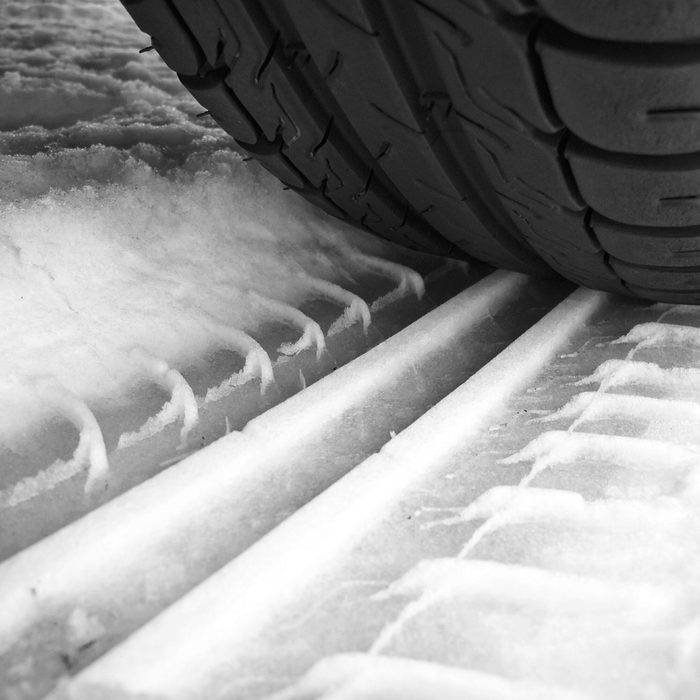Are Snow Tires Really Better Than All-Season Tires?
If you wonder whether your “all-season” tires perform just as well in snow as snow tires, we have the answer. They don’t, and it’s really not even close. Most snow tires, or “winter tires” as they are sometimes known, outperform all-season tires in snow, rain and even on ice. Here is a look at the benefits of snow tires, the technology that makes them work, and some of the pros and cons of putting them on your vehicle.

Why Are Snow Tires Better?
Thanks to a couple of advances in tire technology, winter tires perform much better than the traditional “snow” tires you may remember (if you’re old enough). They work better in snow, ice, slush and mud and on cold, dry pavement. The rubber compounds are entirely new. Most manufacturers now use rubber compounds that include silica, and some spruce up the formula even formula with traction bits and hollow “cells” that squeegee and suction water off the road. Tread designs are also far more aggressive to provide better acceleration and shorter stopping distances. Winter tires have more sipes (cuts in the tread) than all-season tires so that they can squeegee more water off the road. Saw-tooth sipes provide more surface area and cut into snow and slush better than straight sipes. The “micro pump” holes in the tread act like plungers to suck water off the road and then spit it out as the tire rolls.
How Do Winter Tires Handle Ice?
All-season rubber compounds literally skate on ice. But winter tires are made with softer rubber compounds and added silica to give them more flexibility and grip on ice. And the special tread removes more water from the ice. The test results show that winter tires outperform all-season tires on ice, too.
Tirerack.com used an indoor ice rink and timed the acceleration from a dead stop and measured stopping distances from 10 mph (Figure B). Winter tires accelerated faster. When taking a 90-degree turn at 10 mph, the car with winter tires stayed within the marked driving lane, while the car with all-season tires skidded out. That kind of cornering performance can mean the difference between avoiding an accident and causing one.

Cost and Benefits of Winter Tires
A set of four winter tires costs $600 or more, depending on your wheel size. If you have the tires mounted on your existing wheels, you’ll have to pay a shop to swap them each spring and fall. Most shops charge about $18 apiece to demount your all-season tires, mount the winter tires, balance and install them. However, if you buy an extra set of wheels and tire pressure sensors ($480 per set), you’ll save at least $50 on each changeover. Don’t think you can skip the tire pressure sensors—the shop can’t legally install wheels without tire pressure sensors if your vehicle was already equipped with them.
Sure, winter tires cost a lot. But keep in mind that you’re getting a lot for your money. When you factor in the better stopping distance and handling in turns, it’s easy to see how winter tires could prevent an “at-fault” accident. If your collision deductible is in the $500 to $1,000 range, winter tires could actually pay for themselves in a single season if they keep you out of an accident.
Here’s another way to analyze the costs. Winter tires last about five years or 35,000 miles. Those are miles you won’t be putting on your all-season tires. So if buy a full set of new wheels, the true cost of winter tires comes out to about $150 per year for the first five years. Then if you buy a second set for those same wheels, the cost drops to just $65 per year. It’s worth the relatively small annual cost involved to get the extra stopping power and better handling that can help you avoid an accident.
Tire manufacturers make multiple winter tire models for specific winter conditions. So get expert advice from your local tire dealer to match the tire to your vehicle, your climate and your driving habits.
Save Money On the Changeovers
Mounting winter tires on the second set of wheels saves money over swapping tires on a single set of wheels. But you can save even more if you negotiate a package deal with the tire shop. Get a price for the tires, wheels, sensors and free seasonal mounting. If your shop offers a “Tire Hotel” service to store your off-season tires, ask them to throw that into the package as well. That way you won’t have to haul the off-season tires back and forth or store them in your garage.
No comments